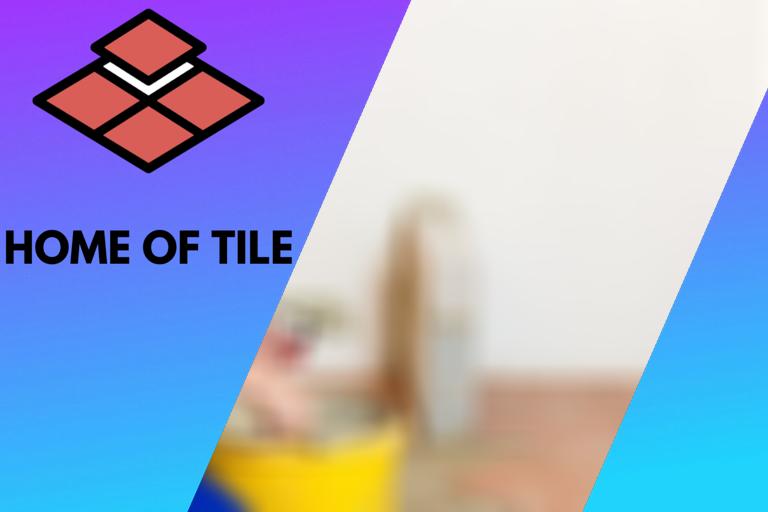Tiling and Cement: 8 things you should know
Tiling is an excellent option when it comes to decorating your walls. Apart from the many decorations and designs to choose from, tiles are more durable, water-friendly, and easy to clean. Whether you are tiling yourself or have hired a construction company, it is good to be aware of the process and the steps.
Learning about tiling is not that hard, but there are a few things you need to understand and control to get great results. An important aspect is a relationship between tiling and cement, as cement backing boards and other cement solutions are pretty common. This article will describe this relationship and provide you with the answers to some frequently asked questions.

Contents
- 1 Do I need to seal the cement board before tiling?
- 2 Do you have to use a cement board when tiling a floor?
- 3 Do you need to tape cement boards before tiling?
- 4 Cement mix ratio for tiling, some helpful tips:
- 5 Do you have to use cement board when tiling a wall?
- 6 Quantity of cement required for tiling, some helpful tips:
- 7 Tiling a cement wall, some helpful tips:
- 8 Tiling onto a cement sheet, some helpful tips:
Do I need to seal the cement board before tiling?
In general, sealing the cement board before beginning to tile is a good idea. It is a precaution to increase the life of your tiles and protect your walls from moisture.
Tiles are generally used in bathrooms and kitchens, two places where the moisture and water vapors exist in abundance. Due to this reason, the backing used for tiling needs to be as water-resistant as possible. If moisture reaches the cement, it can cause tiles to lose their grip. This is where sealants come in handy. Sealants are applied on the top of cement board or concrete backings so that the moisture from the wall cannot reach the tile and adhesive. Moisture, however, is not fully blocked by sealants, but it will definitely help and will increase the life of your tiled wall.
Do you have to use a cement board when tiling a floor?
In general, cement boards are an excellent defense against moisture and make tiling easy. They are best used on floors that are vulnerable to moisture, like plywood. They can also be used to strengthen a floor.
The use of cement boards varies from floor to floor. Some buildings, especially houses, have wooden floors, while others have concrete floors. The rule of using cement board is quite simple. If the floor underneath is made up of material that can soak up moisture and cause dampness and mold problems, cement boards should be used.
Floors made of plywood are generally the material that requires the use of cement boards before tiling. Concrete floors are already water-resistant, and the use of cement boards would be redundant. In that case, you can apply a sealant to the concrete floor and lay tile on it.
Do you need to tape cement boards before tiling?
In general, it is important to seal cracks and joints between cement boards to make them water-resistance. Taping is an excellent method.
The cement boards keep moisture away from the tiles and prevent any mold or dampness from developing underneath the tiles. For cement to become as water-resistant as possible before tiling, sealants, membranes, and tape is used. Cement boards are big, squared tiles of cement that are to be attached to the wall or floor before tiling. Like tiles, there is a small gap left between the two adjacent cement boards, allowing water to seep through them. Before applying sealant and cement mixtures to the cement blocks, tape should be used to seal these gaps.
Cement mix ratio for tiling, some helpful tips:
In general, for floor tiles, the base mortar (the mixture of sand and cement) is in the ratio of 1:4. For tiling walls, the ratio of mortar (the mixture of cement and water) is 1:3.
The process of tiling floors and walls is a little different from each other. The main difference is in the preparation of base mortar. The base mortar is made up of cement and sand for tiling the floor, which is first placed on the floor and leveled. Then on the top of this leveled mortar, the tiles are placed. Whereas for tiling the walls, the mortar is a thick paste of cement and water applied on the back of the tiles.
Do you have to use cement board when tiling a wall?
In general, the use of cement boards as the backboard depends upon the material of the wall. If the material of the wall is suitable for tiling, then no backboard is required.
Walls of buildings are made up of different materials, some use cement or concrete walls, and some use plywood or OSB (oriented strand board). Cement or concrete walls are the best for installing tiles right away after applying sealant, but as for the plywood and OSB, both of these materials are not water-resistant or strong enough to support tiling. These materials require the use of cement boards. Cement boards have to sustain the weight of the tiles without compromising their integrity. To ensure the boards are sturdy enough, many contractors and manufacturers recommend using cement boards that are ½ inch.
Quantity of cement required for tiling, some helpful tips:
To calculate the total amount of cement or the number of bags needed to tile an area, you need the following information:
- Mix ratio of the cement
- The thickness of the mortar layer
- Total area on which tiles are to be installed
Making calculated estimates is a better choice than just going with your gut, especially in construction. Cement is one of the more ingredients for tiling. To ensure that you have enough, it helps to calculate the needed quantity before getting started. Finding the total cement bags required just consists of a few simple calculations, which will be explained with the help of an example.
● Example Calculation of cement:
Let’s assume that we are calculating the amount of cement required for tiling an area of 200Sq.ft
– Data given:
Total area for tiling = 200Sq.ft
Mortar mix ratio = 1:4
Thickness of mortar layer = 1.75inches = 1.75/12 ft = 0.145 ft
– Calculations:
Step 1. The wet volume of cement mortar:
Wet volume = total area for tiling x Thickness of mortar layer = 200 x 0.145
Wet volume = 29.16 cubic feet.
Step 2. Dry volume of cement mortar:
Generally, the dry volume of cement mortar is 33% more as compared to wet volume.
Therefore,
Dry volume = wet volume + 33% wet volume = 1.33 x wet volume = 1.33 x 29.16
Dry volume = 38.78 cubic feet
Step 3. Calculation of cement amount from mortar mix ratio:
As,
Mortar mix ratio = 1:4
Sum of proportion = 1+4 = 5
So, the volume of cement required comes out to be,
Volume of cement = [1/5] x 38.78 = 7.756 cubic feet
As one standard bag of cement covers 1.226 cubic feet of area. So,
No. of cement bags required for covering 7.756 cubic feet = 7.756 / 1.226 = 6.32 or 7
Refer back to this example when calculating the number of cement bags needed to complete your project.
Tiling a cement wall, some helpful tips:
In general, there are three simple steps:
- Carefully examine the wall surface
- Prepare the wall for tiling
- Tile the wall
● Examining the wall:
Examining the wall surface is the most crucial step and must be done with great care. While examining the wall, you must look for any uneven seams disturbing the wall’s level. It would be best if you also looked for any moisture or cracks. Rough surfaces can cause the adhesive to stick poorly to the tile and, hence, risk the tile’s integrity.
● Preparing the wall:
- Cleaned and dried: Preparing the wall for tiling is the most important step. The best wall for tiling is the one that is dry and clean. So, first of all, make sure that your cement wall is clean of any dust and has been dried of any moisture.
- Free of irregularities: walls should be free of any cracks and holes. Make sure that all the holes and cracks are properly treated and filled. If there is a crack on the wall, it should first be taped with cement tape, and then mortar paste should be applied to it to fill the hole.
- Completely leveled: a leveled wall is the key to proper tiling. Use a bubble level to check whether the wall is straight or not. If you find any curves in the wall, try to scrape the rough surface off the wall using a trowel. If the wall is still not leveled, then fill the depression in the wall using mixed mortar. This will help you get a smooth and leveled surface.
- Priming the wall: priming the wall will reduce the absorbency of moisture, strengthen the surface, and ensures optimum adhesion. So, this step will guarantee durable effects.
Your wall is now ready to be tiled.
● Tiling the wall:
– Arranging the tiles:
It is a wise decision to plan out where you will start tiling your wall so that when you have to cover the corners of the wall using tiles, you will not end up with uneven tiles on both corners. Mark the center point of the wall and then start to measure from this center point to determine how many tiles will be placed in between. It is a good practice that the corner tiles are cut at least half the width of the original side. This will look organized and less messy. Now, you will know how far away from the corner the first tile should be placed. Make a marking of that on the wall and, using a bubble level, draw a straight line across that marking in the wall. You now have found the starting point.
– Mixing and applying adhesive:
Many adhesives are present in the market for tiling a cement wall. Each of them must be mixed with water according to the manufacturer’s instructions. After adding water to the adhesive, stir the mixture thoroughly so that all the clumps are removed.
– Start tiling:
Once you have taken the necessary precautions to ensure your surface is prepped and ready, you may begin to lay your tiles down. This section will introduce you to the general steps of the tiling process.
- Step 1. Applying adhesive: Scoop the adhesive mixture on the trowel and spread it on the wall.
- Step 2. Placing tiles: Now, place the first tile on the wall, starting from the position you marked earlier. Gently apply pressure on the tile using hands or a rubber mallet to get the tile in place.
- Step 3. Continue tiling: Place the next tile beside it and in between both tiles, place a spacer. Now, move up the wall when finished tiling one row.
- Step 4. Tiling the corners: The middle portion of the wall is nowcovered, and only the corners are left. Measure the distance again from the corner to the tiles and start cutting tiles according to the required width. Place the adhesive on the wall and then tile in the same manner.
- Step 5. Cleaning the tiles: Wipe the surface of the tiles using a wet sponge.
Tiling onto a cement sheet, some helpful tips:
Tiling the cement sheet is quite similar to tiling a cement wall. Use the following steps:
Step 1: Filling the cracks and applying sealant
Fill all the cracks on the cement sheet using cement board tape and mortar paste. Then apply sealant on the sheet to ensure water resistance.
Step 2: Mix the adhesive
Mix the adhesive as per the manufacturer’s instructions and form a lump-free paste.
Step 3: Spread the adhesive on the cement sheet:
Scoop the adhesive on a trowel and spread it evenly on the sheet.
Step 4: Tile the sheets:
Now place tiles on the sheet, and in between each tile, place tile spacers to keep the spaces even.







